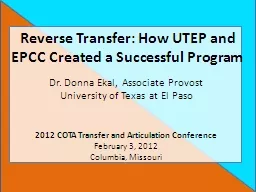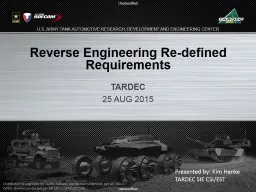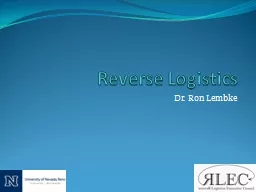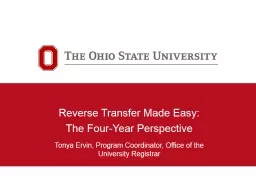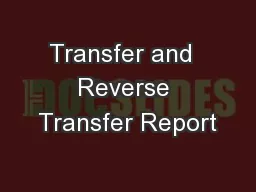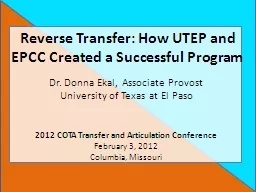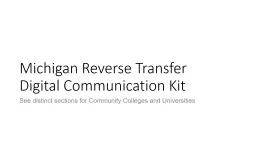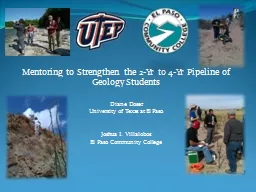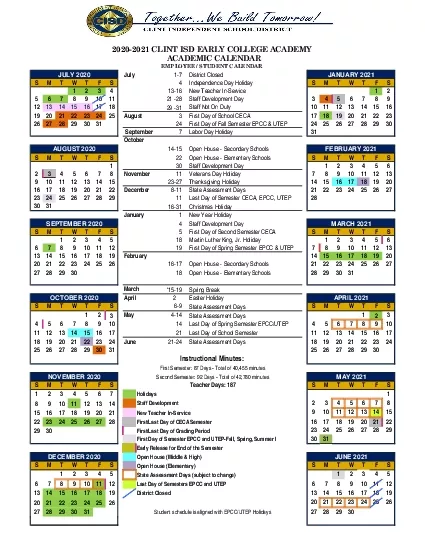PPT-Reverse Transfer: How UTEP and EPCC Created a Successful Program
Author : shoulderheinz | Published Date : 2020-07-01
Dr Donna Ekal Associate Provost University of Texas at El Paso 2012 COTA Transfer and Articulation Conference February 3 2012 Columbia Missouri Long History of
Presentation Embed Code
Download Presentation
Download Presentation The PPT/PDF document "Reverse Transfer: How UTEP and EPCC Crea..." is the property of its rightful owner. Permission is granted to download and print the materials on this website for personal, non-commercial use only, and to display it on your personal computer provided you do not modify the materials and that you retain all copyright notices contained in the materials. By downloading content from our website, you accept the terms of this agreement.
Reverse Transfer: How UTEP and EPCC Created a Successful Program: Transcript
Download Rules Of Document
"Reverse Transfer: How UTEP and EPCC Created a Successful Program"The content belongs to its owner. You may download and print it for personal use, without modification, and keep all copyright notices. By downloading, you agree to these terms.
Related Documents

